When and How to Aerate Your Lawn: A Complete Guide for Stunning Results
- May 28, 2024
- 0 comment
Discover when and how to aerate your lawn with our complete guide. Achieve stunning results and a vibrant, healthy lawn with expert tips and tricks. Transform your lawn into a lush, green paradise with our expert guide on aeration. Learn precisely when and how to aerate your lawn to achieve stunning results that will make your yard the envy of the neighborhood.
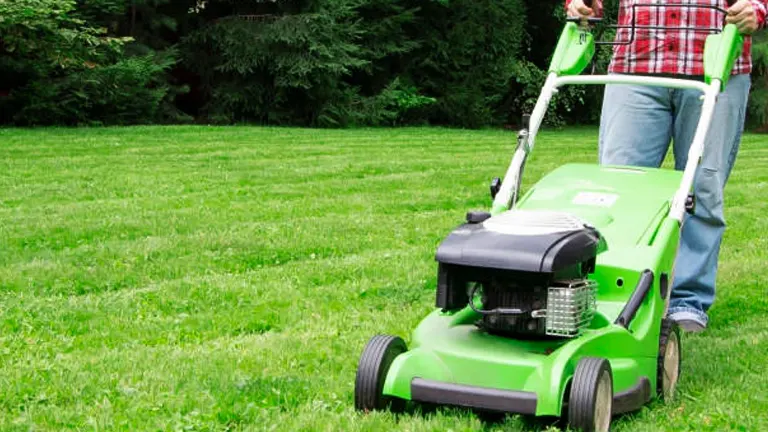
Whether you’re a seasoned gardener or a beginner, our comprehensive tips will help you unlock the secret to a vibrant and healthy lawn. Get ready to elevate your lawn care game and enjoy a yard that’s always a cut above the rest!
Table of Contents
- Understanding Lawn Aeration
- When to Aerate Your Lawn
- Preparing for Lawn Aeration
- How to Aerate Your Lawn
- Post-Aeration Care
- Common Mistakes to Avoid
- Conclusion
- FAQs
Understanding Lawn Aeration
What is Lawn Aeration?
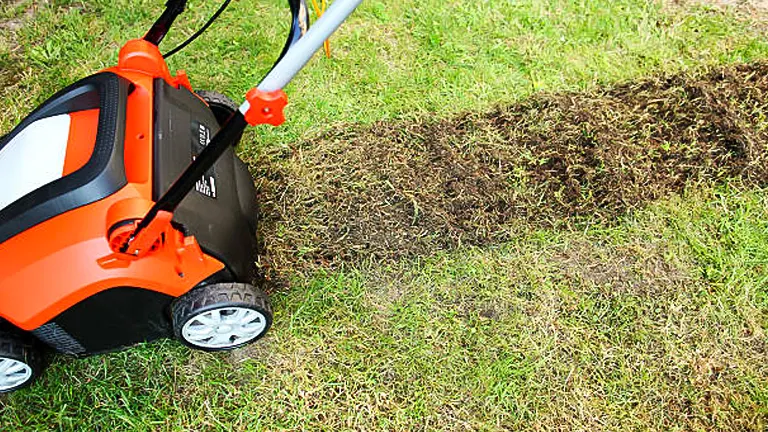
Aeration involves perforating the soil beneath your lawn with small holes to allow air, water, and nutrients to penetrate the grass roots. This process helps the roots grow deeply and produce a stronger, more vigorous lawn. The main methods of aeration are core aeration, spike aeration, and liquid aeration, each serving a specific purpose depending on your lawn’s condition and the soil type.
Types of Lawn Aeration:
- Core Aeration: Removes small cores of soil and thatch from the lawn, promoting improved air circulation and nutrient absorption.
- Spike Aeration: Involves driving spikes into the ground, creating holes without removing soil. This method is less effective than core aeration but can be suitable for less compacted soils.
- Liquid Aeration: A newer method that uses a liquid solution to break apart soil colloids, enhancing water and air penetration.
Benefits of Aeration:
- Enhances soil water uptake.
- Improves fertilizer uptake and use.
- Reduces water runoff and puddling.
- Promotes stronger turfgrass roots.
- Reduces soil compaction.
- Enhances heat and drought stress tolerance.
Signs Your Lawn Needs Aeration:
- Soil compaction: Hard soil resists water penetration.
- Thatch buildup: More than a half-inch of thatch can hinder root growth.
- Heavy use: High foot traffic areas need frequent aeration.
- Water puddles: Standing water indicates compacted soil.
When to Aerate Your Lawn
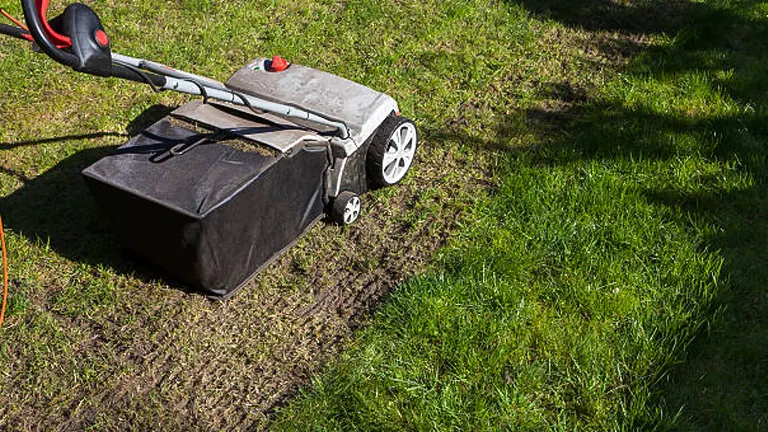
Choosing the right time to aerate is crucial for maximizing the health benefits to your lawn. The best times to aerate are during the growing seasons, when the grass can heal and fill in any open areas after soil plugs are removed. Typically, this means early spring or fall for cool-season grasses, and late spring through early summer for warm-season grasses. Key factors to consider include:
- Climate and Weather Conditions:
The ideal climate for aeration ensures that the soil is moist but not saturated. Aerating when the soil is too dry can make the process laborious and less effective, as hard soil resists penetration. Conversely, overly wet soil can stick to aeration equipment and get compacted further. The perfect soil moisture for aeration should allow a screwdriver to penetrate easily without much resistance. - Soil Type and Texture:
- Clay Soils: Dense and compact, clay soils often require aeration twice a year due to their tendency to compact easily and inhibit root growth. Aerating clay soils helps improve drainage and air penetration.
- Sandy Soils: Although less prone to compaction, sandy soils benefit from annual aeration to enhance nutrient retention and provide stability for grass roots.
- Grass Type and Growth Cycles:
Different grass types have specific growth cycles that dictate the best aeration period:- Cool-season Grasses (e.g., Bluegrass, Fescue): Thrive in cooler temperatures and are best aerated in early spring or early fall. This timing coincides with their natural growth spurts, facilitating rapid recovery and growth.
- Warm-season Grasses (e.g., Bermuda, Zoysia): Peak in the warmer months and should ideally be aerated in late spring or early summer, aligning with their most vigorous growth phase.
Scientific Insights and Aeration Guidelines
For a more scientific approach, consider the following data-driven insights:
- Root Growth vs. Soil Temperature: The ideal soil temperature for aeration should be aligned with active root growth, which typically occurs when soil temperatures are between 50°F and 65°F for cool-season grasses and 60°F to 75°F for warm-season grasses.
- Soil Compaction Levels: Regularly measure soil compaction using a penetrometer. Soil with a compaction of more than 300 psi (pounds per square inch) is considered highly compacted and in need of aeration.
Aeration Timing Table
Here’s a detailed table to help you decide when to aerate based on grass type, climate, and soil condition:
| Grass Type | Soil Type | Ideal Aeration Season | Recommended Frequency |
|---|---|---|---|
| Cool-season Grass | Clay/Sandy | Early Spring or Fall | Twice a year for clay, once a year for sandy |
| Warm-season Grass | Clay/Sandy | Late Spring through Summer | Twice a year for clay, once a year for sandy |
Preparing for Lawn Aeration
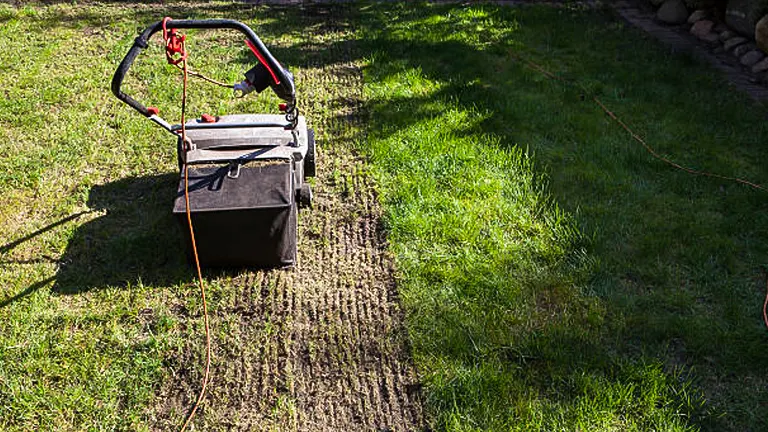
Optimal preparation is critical for successful lawn aeration, enhancing both the efficiency of the process and the health of your lawn. Below, we delve deeper into the necessary tools, preparatory steps, and safety measures needed for effective aeration, complemented by a detailed table for quick reference.
Tools and Equipment Needed
Core Aerator: Essential for removing plugs of soil to relieve compaction, a core aerator is ideal for most lawn types but is particularly beneficial for highly compacted soil. It can remove cores up to 3 inches deep, which improves air, water, and nutrient penetration.
Spike Aerator: This tool is simpler and less disruptive, suitable for soils that are not overly compacted. Spike aerators can be manual or machine-operated and work by punching holes into the ground.
Liquid Aerator: A chemical solution that breaks apart compact soil at the molecular level, enhancing permeability. It’s applied using a garden sprayer and is an excellent alternative where physical aeration is impractical.
Equipment Performance Specs:
- Core Aerator: Typically extracts soil cores approximately 0.5 to 0.75 inches in diameter.
- Spike Aerator: Usually makes holes about 1 to 2 inches deep.
- Liquid Aerator: Coverage depends on the concentration and the sprayer settings but generally covers up to 4,000 square feet per gallon.
Pre-aeration Lawn Care
Mowing: Cut the grass to about two-thirds of its normal height to reduce stress on the grass and facilitate easier soil extraction.
Watering: Hydrate the lawn adequately (about 1 inch of water) to soften the soil, making it more malleable for aeration. This moisture level allows for smoother operation of aeration equipment and better soil plug removal.
Debris Clearance: Remove sticks, rocks, leaves, and other debris to prevent equipment clogging and ensure uniform aeration.
Soil Testing: Conduct a soil test to assess nutrient levels and pH before aeration. This can guide your post-aeration fertilization and treatment strategy.
Safety Precautions and Tips
Personal Protective Equipment: Wear sturdy boots, gloves, and protective eyewear to safeguard against accidental injuries from soil debris or machinery.
Equipment Handling: Always follow the manufacturer’s guidelines for machine operation. Perform a check on the aeration equipment before use to ensure it is in proper working order, paying special attention to tines and spikes for wear and tear.
Area Safety: Mark out any underground utilities or irrigation systems prior to aeration to avoid damage. Ensure the area is clear of pets and children during aeration to prevent accidents.
Equipment and Preparation Summary Table
| Equipment Type | Core Size/Depth | Ideal Usage Scenario | Safety Note |
|---|---|---|---|
| Core Aerator | 0.5-0.75″ dia., 3″ deep | Highly compacted soils | Check for underground utilities |
| Spike Aerator | 1-2″ deep | Lightly compacted or sandy soils | Suitable for smaller areas |
| Liquid Aerator | Variable coverage | Difficult terrain or small patches | Follow dilution guidelines |
How to Aerate Your Lawn
Core Aeration
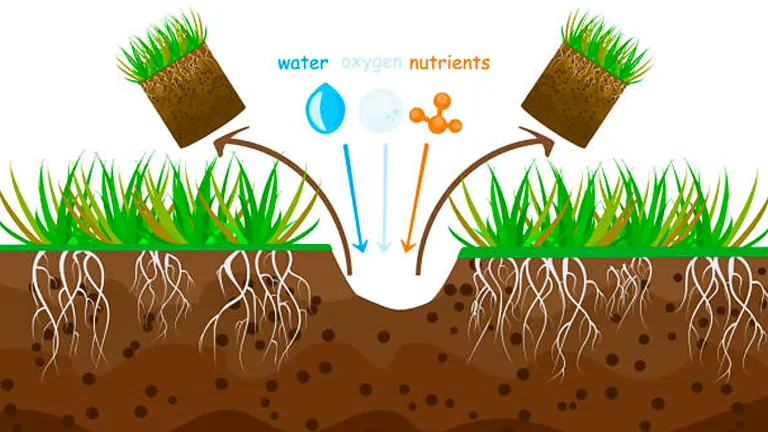
Choose a core aerator designed to remove soil plugs effectively. Ideally, the aerator should extract cores that are 2-3 inches deep and 0.5-0.75 inches in diameter. A high-quality core aerator can be manual or motorized, with motorized versions being more suitable for larger lawns.
Operating the Aerator:
- Preparation: Ensure your lawn is adequately moist but not waterlogged.
- Starting: Begin by marking any underground utilities or sprinkler systems to avoid damage.
- Aerating: Operate the aerator like a lawnmower, making steady, even passes across the lawn. Overlap each pass slightly to ensure complete coverage and prevent soil from becoming overly compacted.
- Double Passes: For severely compacted areas, perform two passes in perpendicular directions to maximize aeration effectiveness.
Coverage Patterns:
Uniform coverage is crucial for effective aeration. Aim to space holes about 3-4 inches apart. In areas with severe compaction, increase the frequency of aeration to improve soil structure over time.
Spike Aeration
Using Spike Aerators:
Spike aeration is a less intensive method suitable for light maintenance. Spike aerators can be manual tools, aerator shoes, or push-behind machines. The goal is to create holes that allow air, water, and nutrients to penetrate the soil surface.
Depth and Coverage:
- Depth: Ensure spikes penetrate at least 2-3 inches deep for effective aeration. This depth allows for adequate root zone access.
- Coverage: Maintain even spacing of holes, similar to core aeration, aiming for 3-4 inches apart. This spacing ensures uniform air and water distribution.
Additional Tips:
Spike aeration is less disruptive than core aeration but may require more frequent application to maintain soil health, especially in high-traffic areas.
Liquid Aeration
Choosing the Right Product:
Select a liquid aerator formulated for your specific soil type and lawn condition. These products typically contain surfactants and organic matter that break down soil compaction at a microscopic level.
Application:
- Preparation: Dilute the liquid aerator according to the manufacturer’s instructions. Ensure your lawn is adequately moist before application.
- Spraying: Apply the product evenly using a garden sprayer. For best results, follow a systematic spraying pattern to ensure thorough coverage.
- Post-application: Water the lawn lightly after application to help the product penetrate the soil. Avoid heavy irrigation immediately after application to prevent runoff.
Scientific Insights:
- Core Aeration Impact: Studies show that core aeration can reduce soil bulk density by 10-15%, significantly enhancing root growth and water infiltration rates.
- Spike Aeration Benefits: While less effective than core aeration in reducing compaction, spike aeration can still improve soil oxygen levels and root respiration.
- Liquid Aeration Efficiency: Research indicates that liquid aeration can improve soil porosity by up to 20%, especially in sandy soils where mechanical aeration is less effective.
Comparison Table
| Aeration Method | Depth (inches) | Ideal Use Case | Frequency | Scientific Insight |
|---|---|---|---|---|
| Core Aeration | 2-3 | Severe compaction, large lawns | Once or twice a year | Reduces soil bulk density by 10-15% |
| Spike Aeration | 2-3 | Light maintenance, smaller areas | Multiple times a year | Improves soil oxygen levels, enhances root respiration |
| Liquid Aeration | Surface to 3 | Sandy soils, hard-to-reach areas | As needed, typically quarterly | Increases soil porosity by up to 20% |
Post-Aeration Care
Immediate Steps After Aeration:
- Watering: Immediately after aeration, water your lawn deeply. This hydration helps the soil and nutrients penetrate further into the aerated holes, reaching the grass roots more effectively. Consistent, moderate watering over the following week will assist the lawn in recovery and growth.
- Fertilizing: Applying fertilizer after aeration can significantly enhance nutrient uptake. Choose a high-quality fertilizer that matches your grass type and soil needs. The open channels created by aeration ensure that nutrients are absorbed more efficiently by the roots.
- Overseeding: If your lawn is thin or patchy, overseeding after aeration is ideal. The seeds easily settle into the holes, establishing better contact with the soil, which improves germination rates. Use a seed blend that matches your existing lawn type for uniform growth and appearance.
Long-Term Lawn Care Tips:
- Regular Mowing: Keep your lawn at its ideal height, which varies by grass type. Regular mowing encourages thicker growth and reduces weed competition.
- Continued Watering: Deep, infrequent watering encourages deeper root growth, which enhances drought resistance.
- Seasonal Fertilization: Follow a fertilization schedule that complements the growing season of your grass type. Avoid over-fertilization, which can lead to rapid, weak growth and increased susceptibility to diseases.
- Weed Control: Apply pre-emergent herbicides if necessary, and tackle weeds as they appear to prevent them from establishing and spreading.
Implementing these post-aeration care practices is pivotal for maintaining a healthy, resilient lawn. The effort put into regular maintenance will pay off with a lush, green, and vigorous lawn that not only looks great but also withstands environmental stresses better.
Common Mistakes to Avoid

To achieve the best results from your lawn aeration and subsequent care, be aware of common pitfalls that can undermine the effectiveness of your efforts:
- Over-Aeration: While aeration is beneficial, too much can harm your lawn. Generally, aerating once a year is sufficient for most lawns, though highly compacted or clay soils may benefit from twice-yearly aeration.
- Wrong Timing: Avoid aerating during drought conditions or when the lawn is dormant, as this can stress the grass further and lead to poor results.
- Using Incorrect Equipment: Ensure that the aerator type suits your lawn’s specific needs. Using a spike aerator on highly compacted soil, for example, might not be effective and could actually increase soil compaction.
- Neglecting Post-Aeration Care: Skipping the critical steps of watering, fertilizing, and overseeding post-aeration can significantly diminish the benefits. These actions are essential for capitalizing on the improved soil structure and health.
By avoiding these common errors and following the detailed guidelines provided, you will enhance your lawn’s health and aesthetic appeal significantly.
Related Post
- How to Build a Barn: A Step-by-Step Guide for Beginners
- How to Build a Sustainable Compost Bin: Easy and Eco-Friendly DIY
- How to Fertilize Bougainvillea: A Complete Guide for Stunning Blooms
- How to Fertilize Apple Trees: Essential Tips for a Bountiful Harvest
- How to Fertilize Lemon Trees: Secrets for Thriving Citrus
- How to Fertilize Avocado Tree: A Step-by-Step Guide for Lush Growth
- 10 Best Bow Saws to Buy in 2024: Top Picks for the Money
- Best Miter Saw For Beginners
- Top 10 Pruning Saws to Buy in 2024: Best for the Money
- 7 Best Pocket Chainsaw
Conclusion
Aeration is a pivotal lawn care practice that promotes healthier, more resilient grass by improving soil structure, enhancing nutrient uptake, and facilitating effective root growth. By understanding the what, when, and how of aeration, you can take significant strides towards achieving a stunning lawn. Remember, the key to successful aeration lies in choosing the right time and method, preparing adequately, and following up with diligent post-aeration care.
FAQs
- What type of aerator is most effective for different lawn sizes?
For small to medium-sized lawns, a manual core aerator might suffice, especially if you’re dealing with minimal soil compaction. For larger lawns or more severe compaction, a motorized core aerator is generally more effective and efficient, as it can cover more ground with consistent depth and spacing. - Can aeration help reduce lawn diseases?
Yes, aeration can help reduce the occurrence of lawn diseases. By improving air circulation and reducing soil compaction, aeration helps create an environment less conducive to common fungal diseases. Additionally, healthier root growth strengthens the lawn’s overall resilience against pathogens. - Is there a difference in aeration techniques for shaded vs. sunny lawns?
While the basic aeration process remains the same, shaded lawns might benefit from less frequent aeration, as they typically experience less evaporation and therefore retain moisture longer. However, be mindful of soil compaction and thatch build-up, which can still occur in shaded areas. - How long does it take for a lawn to recover after aeration?
Recovery times can vary based on grass type and environmental conditions, but generally, lawns begin to show signs of recovery within 2-3 weeks of aeration. Proper post-aeration care, like watering and fertilizing, can accelerate this process. - Should I aerate my lawn if it’s newly seeded?
It’s advisable to wait until your new grass has been mowed a few times before aerating. This allows the roots to establish sufficiently to withstand the stress of aeration. Typically, waiting at least 6 months before the first aeration is recommended. - Does aeration frequency change with different types of soil?
Yes, soil type can significantly influence aeration frequency. Clay soils, which are dense and compact easily, may need aeration twice a year, while sandy soils, which drain quickly and compact less, might only require aeration once every one or two years. - Can I use a DIY method to aerate my lawn?
While professional equipment is generally more effective, DIY methods such as using a garden fork or homemade spike shoes can be used for very small areas or light maintenance. These methods are more labor-intensive and less consistent than using specialized aeration equipment. - What is the best follow-up treatment after aeration to promote the best growth?
After aerating, applying a top dressing of compost or sand can be very beneficial. This material works into the aeration holes, improving soil structure and fertility. Following this with overseeding and fertilizing will help ensure robust, even growth and a thick, healthy lawn.
With this guide, you’re now equipped to effectively aerate your lawn, promoting a healthier, more resilient turf. Remember, proper timing and technique are key to seeing those stunning results.

Joel Cunningham
Forestry AuthorI'm Joel Cunningham, an expert in pruning and weed management with over a decade of experience. My skills are rooted in formal training and extensive practice, focusing on advanced pruning techniques and efficient weed control. I'm known for my quality work, precision, and deep understanding of plant health and soil dynamics. My contributions extend to educational initiatives where I share sustainable practices and advice, establishing myself as a reliable and authoritative figure in the gardening community.







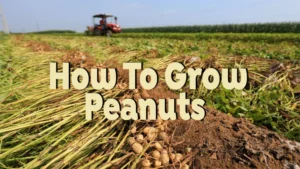
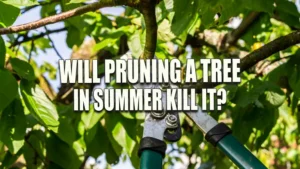




Leave your comment